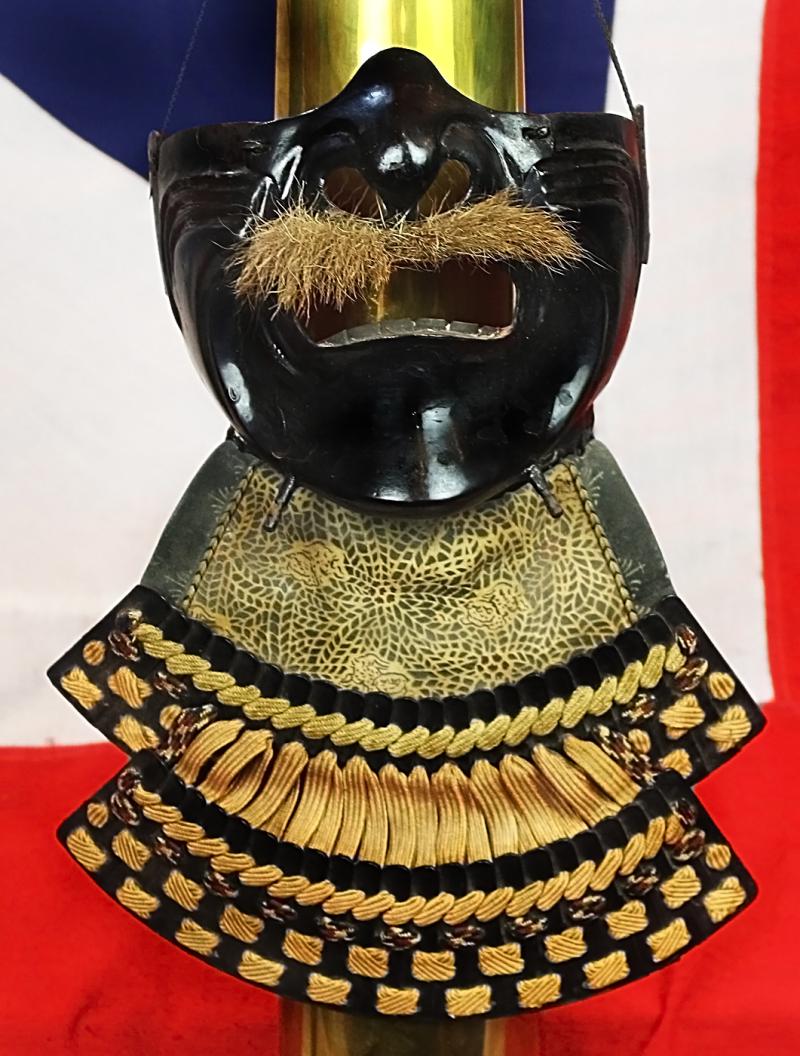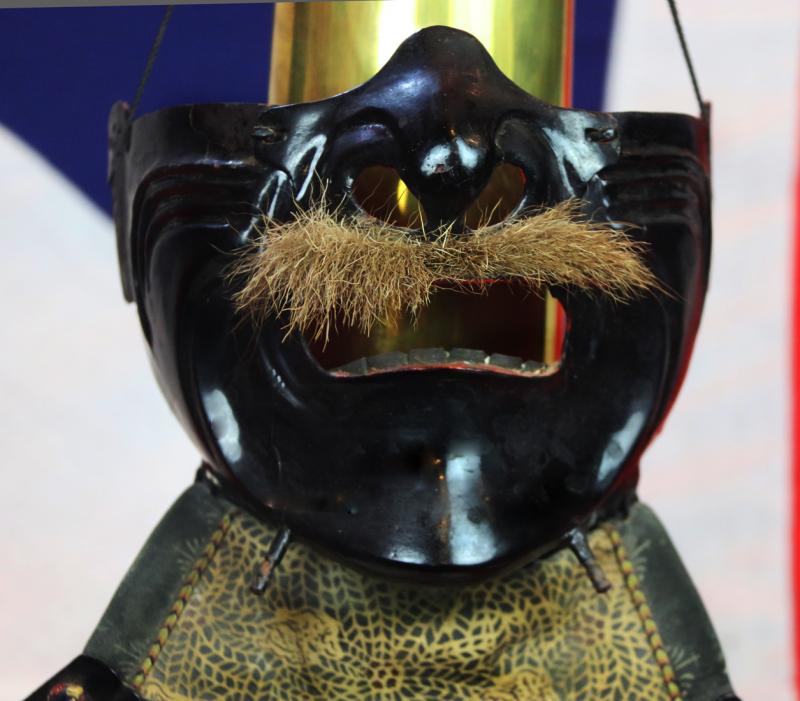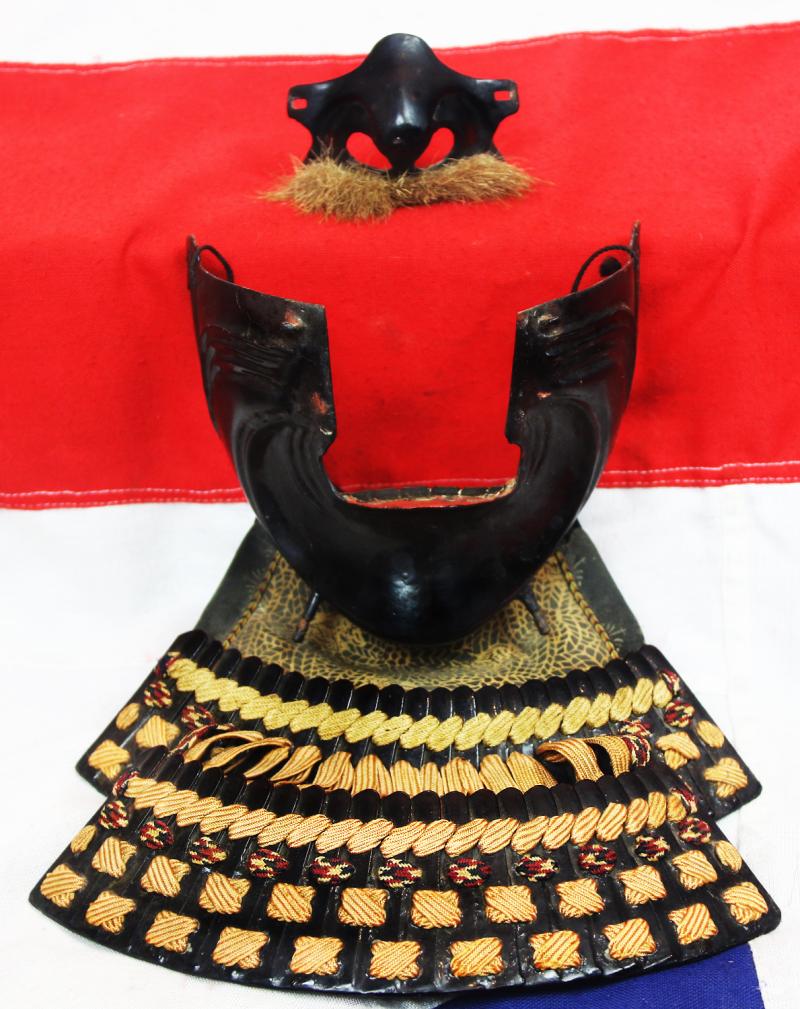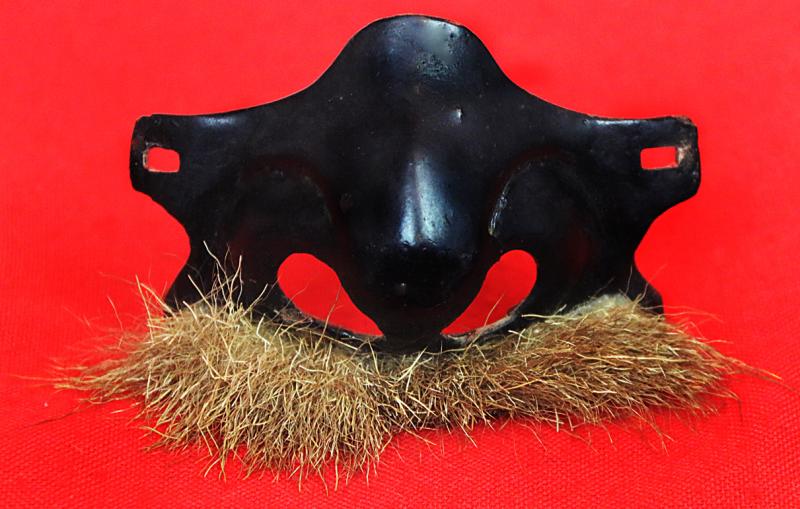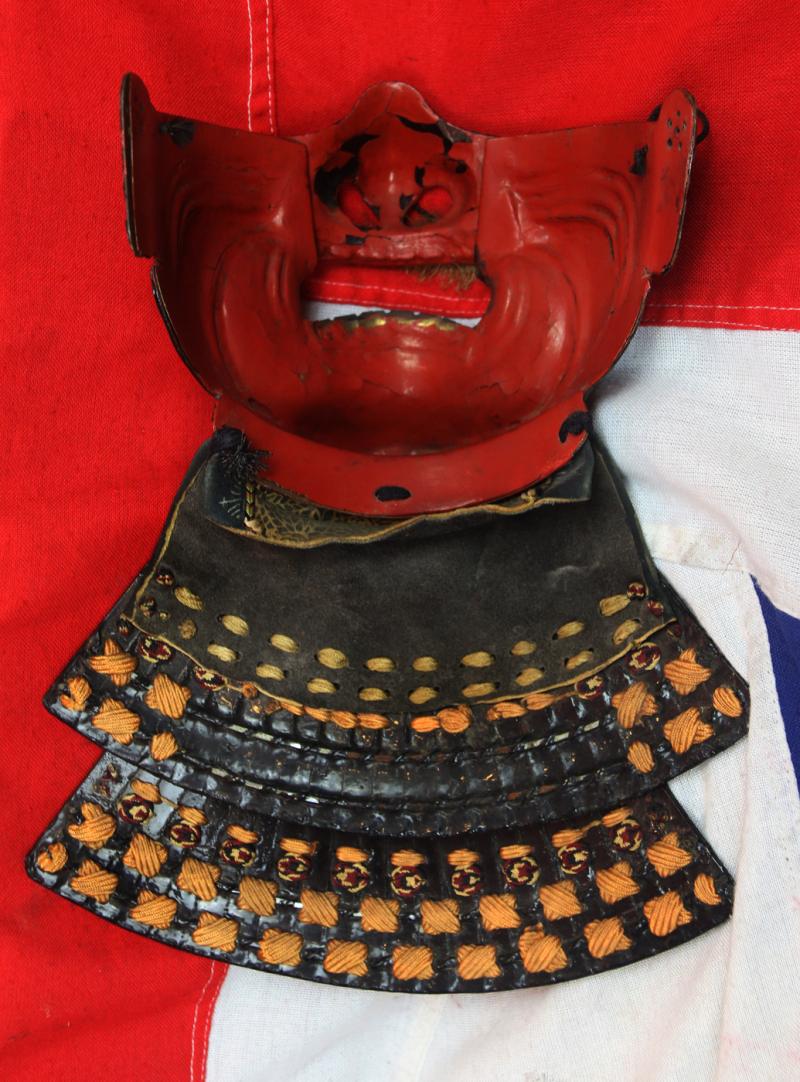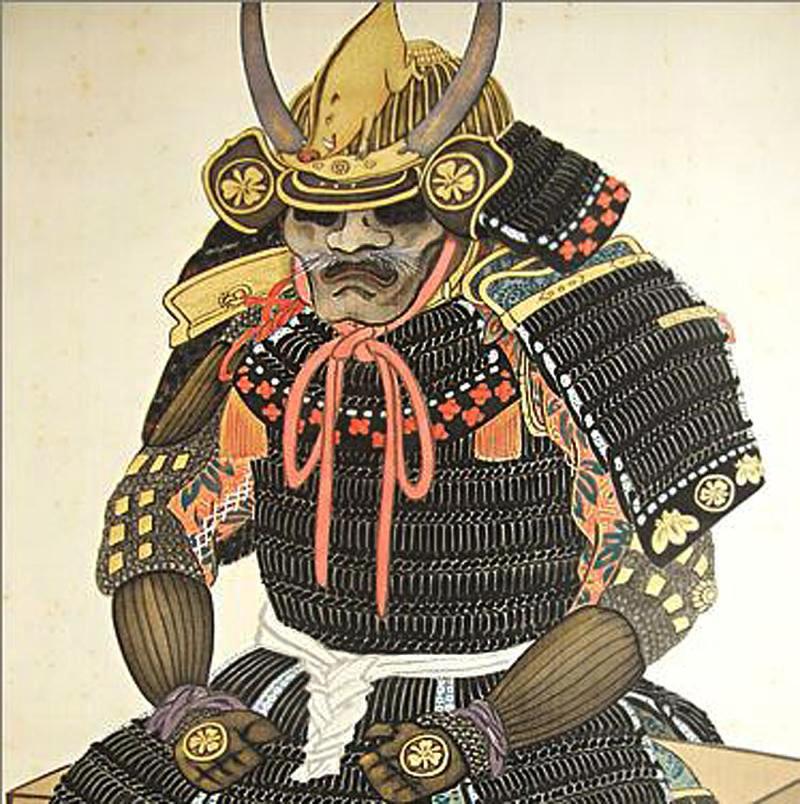A Stunning, Fearsome Yet Beautiful, Edo Period Shirohige Ressei-Menpo "Mask With Fierce Expression" Samurai Face Armour,, Probably Myochin School, 18th century
Men-yoroi (面鎧), also called menpō (面頬) or mengu (面具), are various types of facial armour that were worn by the samurai class and their retainers in feudal Japan. These include the sōmen, menpō, hanbō or hanpō, and happuri.
A resseimon cheek is a form of cheek below the eyes, and is a mask with a very fierce, angry, and threatening expression. He is characterized by wrinkles on his nose and cheeks, wide open mouth, moustache and gold teeth. This work is a typical ressei mask made of iron and covered with black lacquer over the entire surface, and is attached with a collar called a kuruwa, which was commonly used in the Edo period.
This is a wonderful piece of Japanese Samurai 'art' made for warfare, which features a kuchi hige (mustache), shiwa (facial wrinkles). Extremely collectable art that is most desirable in its own right, often stunningly used for interior decoration as an individual work of samurai art in its own right. A very good urushi lacqured embossed iron mask of 'Me no Shita Men' (half face) type. Mid Edo period 18th century. Typical Myochin school craftmanship with very sharp embossing. A multi coloured silk bound yodarekake, neck defence with hooked standing cord pegs for attaching with cords to the samurai. A doeskin top to the neck defences decorated in a black inked pattern of Shishi lion dogs on a leaf pattern background. The inner face is decorated with vermillion lacquer, and the neck lames are covered in black urushi lacquer under the cords. Face armour, menpo, is samurai armour, and this is called 'with a fierce expression' masks They were worn with the Samurai's armours to serve as a protection for the head and the face from sword cuts. Even if the mask in unsigned, the type, and its the features suggest this fabulous face armour menpo was made by a smith from the Myochin school.
There are 4 types of mask designs that came into general use in Japan: happuri (which covers the forehead and cheeks), hanbō (covers the lower face, from below the nose all the way to the chin), sōmen (covers the entire face) and the me-no-shita-men (covers the face from nose to chin). We can also classify those mask depending on their facial expressions, most of which derive from the theatre masks. It has an asenagashino ana a hole under the chin to drain off perspiration and orikugi two projecting studs above the chin to provide a secure fastening to the wearer. In the 16th century Japan began trading with Europe during what would become known as the Nanban trade. Samurai acquired European armour including the cuirass and comb morion which they modified and combined with domestic armour as it provided better protection from the newly introduced matchlock muskets known as Tanegashima. The introduction of the tanegashima by the Portuguese in 1543 changed the nature of warfare in Japan causing the Japanese armour makers to change the design of their armours from the centuries old lamellar armours to plate armour constructed from iron and steel plates which was called tosei gusoku (new armours). Bullet resistant armours were developed called tameshi gusoku or (bullet tested) allowing samurai to continue wearing their armour despite the use of firearms.
The era of warfare called the Sengoku period ended around 1600, Japan was united and entered a relatively peaceful Edo period. However, the Shoguns of the Tokugawa period were most adept at encouraging clan rivalries and conflicts and battles were engaged throughout the empire. This of course suited the Shogun very well, while all his subordinate daimyo fought each other they were unlikely to conspire against him. Samurai use continued to use both plate and lamellar armour as a symbol of their status but traditional armours were no longer necessary for war, but still for battle. The most important branch of the Myochin school is probably that of the Ki region. Founded by Kunimichi, it became popular between 17th and 18th century for the works of Munesuke, who had the technical ability and the artistic capacity to create samurai armour of great beauty, In fact, this is the period when Japanese armor makers became aware that they were living in a peaceful time and their works begun looking back at the mediaval samurai armour as an inspiration: kabuto started again to be of circular shape and decorations became again large and rich, as in the old o-yoroi armor.
The best ability of Munesuke was the hammering technique (uchidashi): his menpo look almost exagerated in their shapes, with a very long chin, sharp and deep wrinkles on the cheeks and theatrical mouth. Moustaches are often inlaid in silver or gold, instead of being in fur as on Nara style menpo.
But the armor maker who really brough the uchidashi technique to the highest level is Muneakira, pupil and adopted son of Munesuke, which we can consider the best maker for samurai armour of modern times: his hammeried works are extraordinary, with precise and sharp lines of a quality that nobody else achieved.
The men-yoroi, which covered all or part of the face, provided a way to secure the top-heavy kabuto (helmet). The Shinobi-no-o (chin cord) of the kabuto would be tied under the chin. Small hooks called ori-kugi or posts called odome located on various places would help secure the chin cord. The men-yoroi was constructed from iron, leather, or a combination of both. It had a lacquered or rusted type of finish and included a variety of facial details, such as a moustache, fierce teeth and a detachable nose. With the exception of the happuri, a men-yoroi had a small hole underneath the chin for sweat drainage.
Face armour in Japan begins with the happuri, which is depicted in Heian- and Kamakura-era yamato-e paintings and is thought to have appeared during the 10th or 11th centuries. It is depicted as being worn with or without a helmet by both mounted warriors and foot retainers. By the 14th century, the hōate appears, and according to Tom Conlan, this development is behind decreased facial wound statistics. However, others, such as Yamagishi Sumio, believe that the hōate was not widespread at that time, as it—and the later menpō—restricted the vision of the wearer. Hōate are also portrayed in art and literature of the period, most notably the Aki no yo no Nagamonogatari scroll and Taiheiki. The menpō (half-mask with detachable nosepiece) and the sōmen (full face mask) are believed to have been introduced around the mid to late 15th century, and the hanbō (chin guard) in the second half of the 16th century
.
Code: 25241
3750.00 GBP

